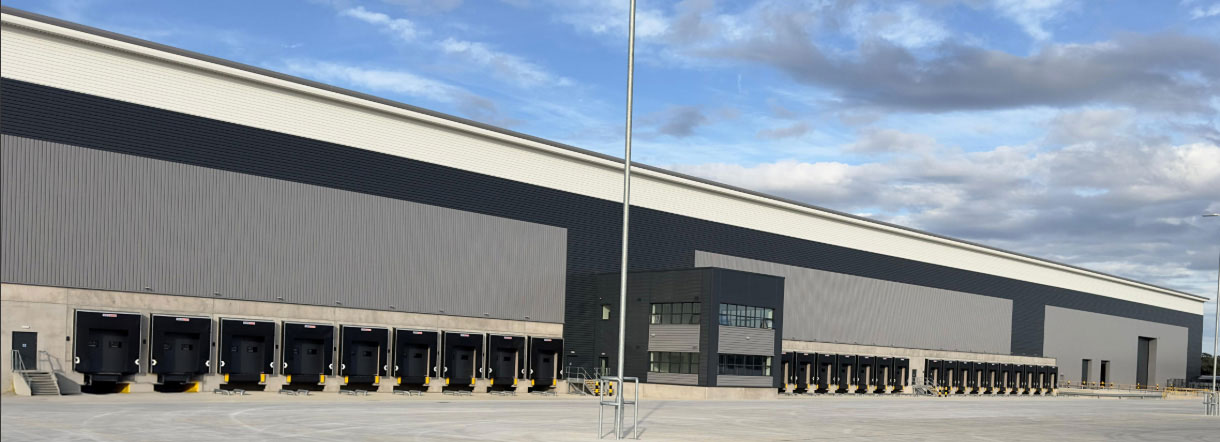About us
With over 40 years experience within the Siphonic industry, Sapoflow Limited are committed to providing unparalleled quality and service, working in-line with British Standards and industry best practice.
Sapoflow's history
The Danish owned Siphonic Roof Drainage company "Sapolite UK" established themselves in the UK in 1985, introducing Siphonic Roof Drainage via the UV-System to the UK Construction Industry.
The senior management of "Sapolite UK" formed Sapoflow in May 1992, taking over the business interests of "Sapolite UK" after the exit of the Danish owners. Sapoflow have continued to soley distribute the UV-System to the UK Construction market to this day.
Starting his career as a designer and draughtsperson for "Sapolite UK" our Managing Director, Mr Anthony Grayson, gained personal one to one tuition from Dr Per Sommerhein of UV-System on the priciples of Siphonic Roof Drainage design. Tony has progressed from designer and draughtsperson, to both site and office based management, and onto directorship of the company.
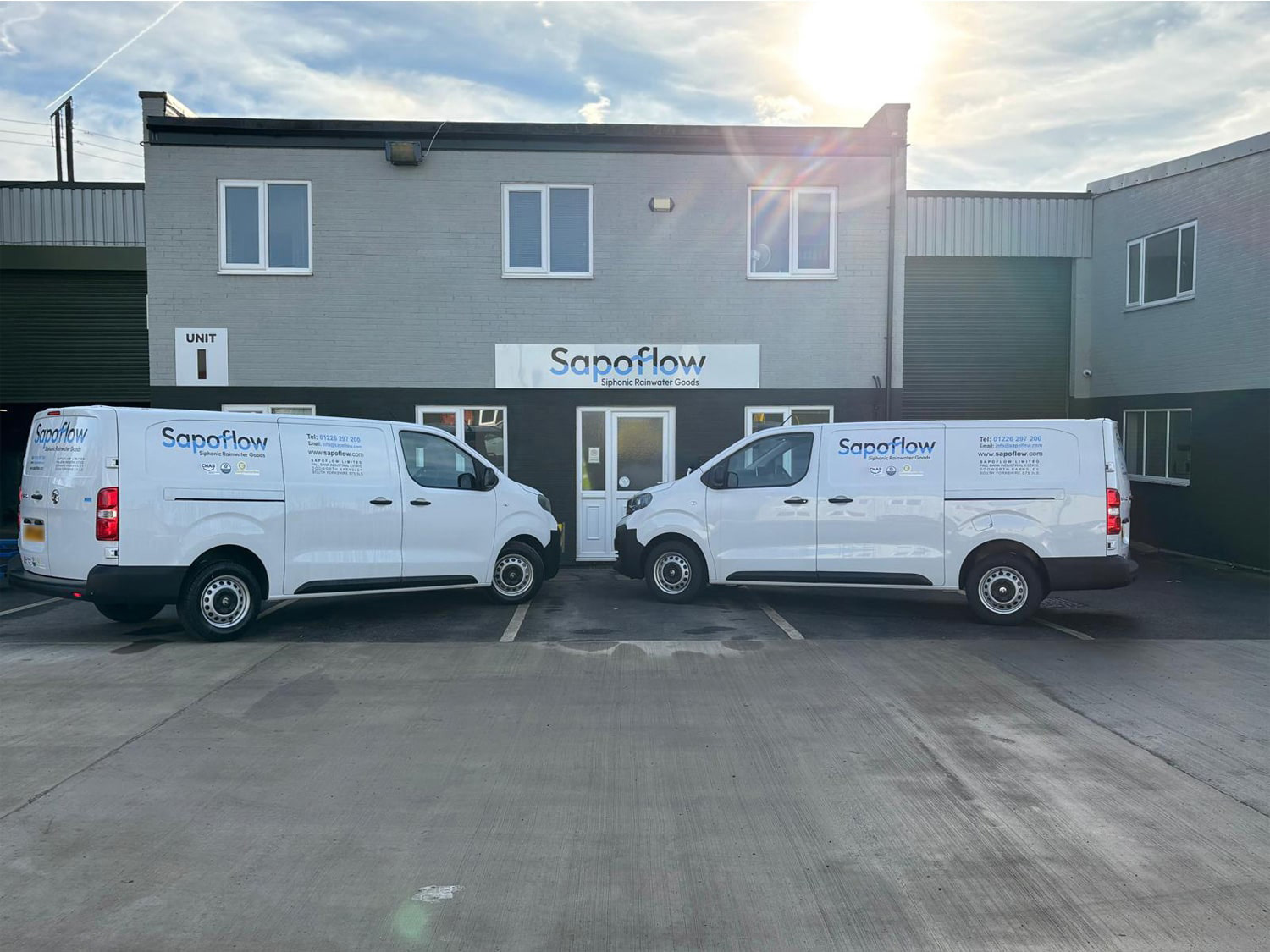
The history of UV-System
Sapoflow are the sole UK representative of UV-System, the worlds leading authority on Siphonic Roof Drainage Systems, and the creators of the ORIGINAL full-bore Siphonic Roof Drainage system.
Since its introduction in 1968 more than 150 million square metres of roof have been drained by the UV-System. The first UV-System outlet (patented in 1968) provided a breakthrough in roof rainwater management by eliminating air-entrainment, via the uniquely designed siphonic roof rainwater outlet connecting to the rainwater pipework.
The hydraulic principles established by respected scientists and engineers - Bernouilli, Prandtl, Darcy, Nikuradse, Weisbach, Colebrooke et al - could be brought together to facilitate the accurate design of fullbore rainwater pipe systems.
The benefits of Siphonic Roof Drainage to the construction industry were quickly identified.
The original concept for this technique was continually developed by its inventor, Mr Olavi Ebeling, from inception and in collaboration with Dr Per Sommerhein of Stockholm post 1972. Current UV-System rainwater outlets and applied UV-System dimensioning technology are the result of over 50 years of development, study and experimental testing.
UV System is recognised and accepted internationally and independently certified to the following:
- British Board of Agrément (BBA) [Certificate Number 07/4438 held by Sommerhein AB for their UV-SYSTEM RAINWATER DRAIN SYSTEM]
- The International Association of Plumbing and Mechanical Officials (IAPMO)
- Centre Scientifique et Technique du Bâtiment (CSTB) French and Canadian Software Testing Board
- LGA QualiTest GmbH, a German association of technical inspection organizations.
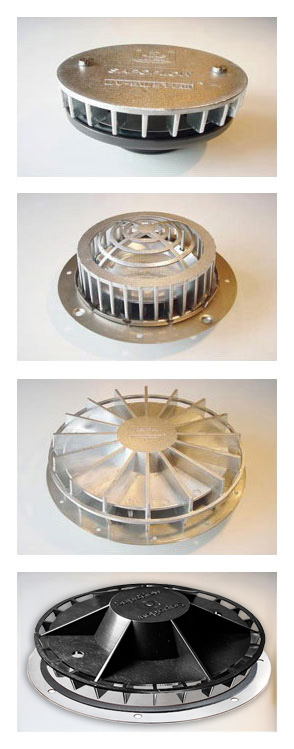
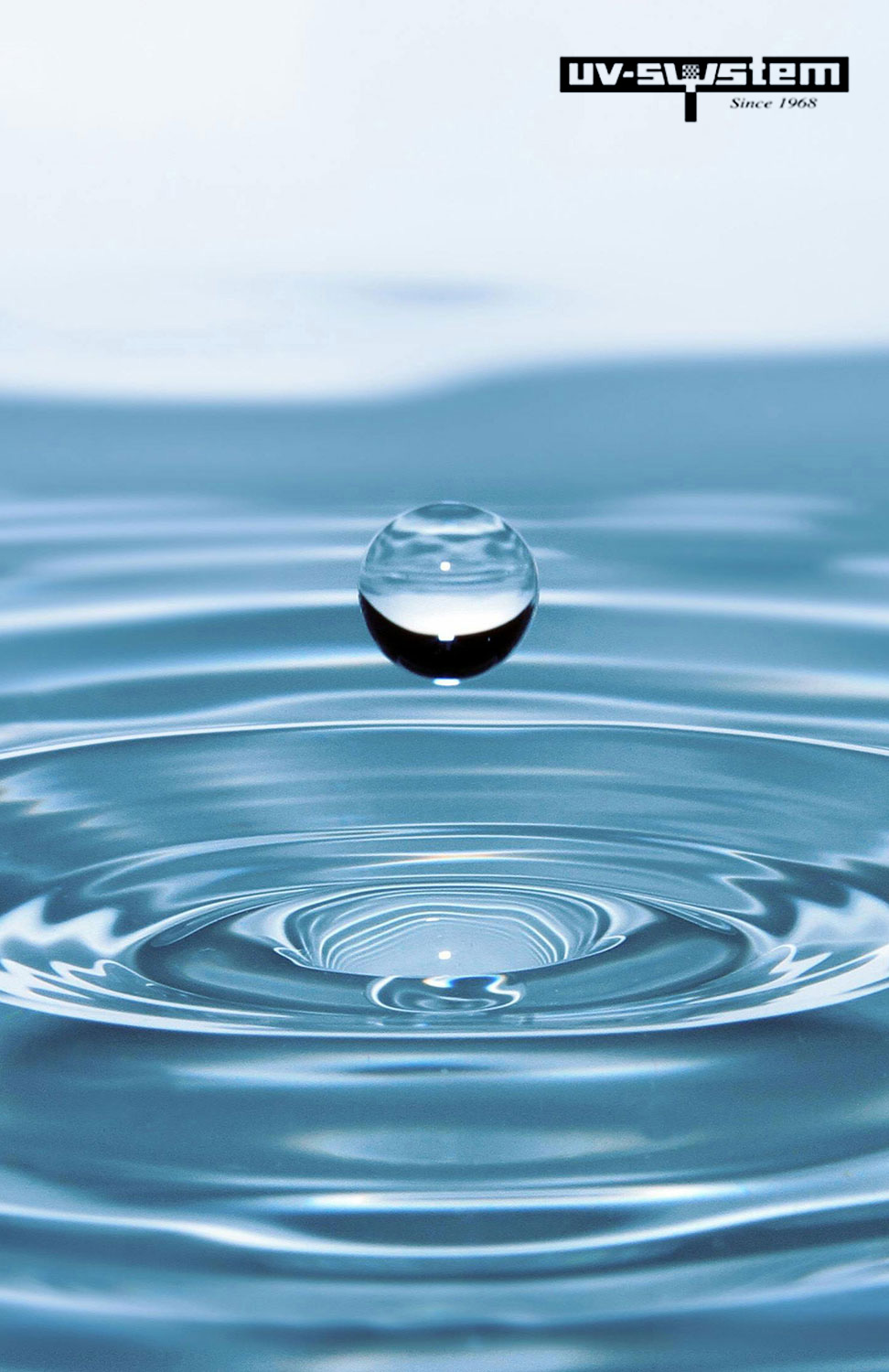
Technical information
Technical
From a flow point of view there are two main types of roof drainage system, gravity flow and full-bore flow Siphonic systems. In gravity flow systems downpipes are usually dimensioned with a fill-factor of 1/5 - 1/3. Lateral pipework may be designed to have a flow factor of 0.70 - 1.0. As a consequence the drainage capacity may be considered to be dependent upon the gradient of the laterally installed pipework.
In Siphonic Systems, all pipework has a flow factor of 1.0 at dimensional rainfall intensity and the pressure in the pipework differs from the prevailing atmospheric pressure. The full difference in height (head) between the roof outlets and the discharge point to the main drainage system at ground level is utilised when dimensioning the pipework. As a result considerably reduced pipe dimensions (when compared to gravity flow systems) are produced with consequent higher flow velocities in the pipework.
National Standards bodies, Local Authorities and independent certifying agencies from various countries have examined and approved UV-System technology and outlets during the years since its inception (Such as BBA [Certificate Number 07/4438 held by Sommerhein AB for their UV-SYSTEM RAINWATER DRAIN SYSTEM], IAPMO, CSTB, LGA).

Benefits of siphonic drainage
The key advantage of siphonic drainage is the reduction of the number of downpipes and below ground drainage requirements. Not only are downpipes reduced in number and diameter, their locations are also flexible.
The elimination of air from pipework, both vertical and horizontal, is achieved firstly by the use of the extensively tested UV-System outlet which prevents air entrainment. Secondly Siphonic Drainage dimensioning software utilises the height of the building as a hydraulic "head" balancing the friction and local losses in the pipe configuration and reducing the pipe diameters to the minimum necessary to transport the design volume of water. Hydraulic balance is achieved using bespoke computer software by permutating the lateral and vertical pipe cross-sections.
The resultant full-bore flow or siphonic action allows the routing of an internal, high level, horizontally-installed collecting pipe system serving multiple roof outlet points. Ultimately each siphonic system discharges via a vertical downpipe into the ventilated flow main drainage system.

Summary
Extensive experience of UV-System design and installation world-wide leads us to believe that although traditional roof drainage methods have been used for centuries, they are now being replaced by full-bore flow Siphonic systems for the roof drainage of many commercial and industrial building projects.
Conventional gravity flow drainage systems cannot effectively dispose of the volumes of water precipitated on large and/or complex roofs without costly multiple discharge points inserted throughout the building. The size, scale, and complexity of today’s buildings and the introduction of architectural and engineering criteria often makes traditional roof drainage disposal impractical and Siphonic Roof Drainage Systems a more viable solution.
Our Management Structure
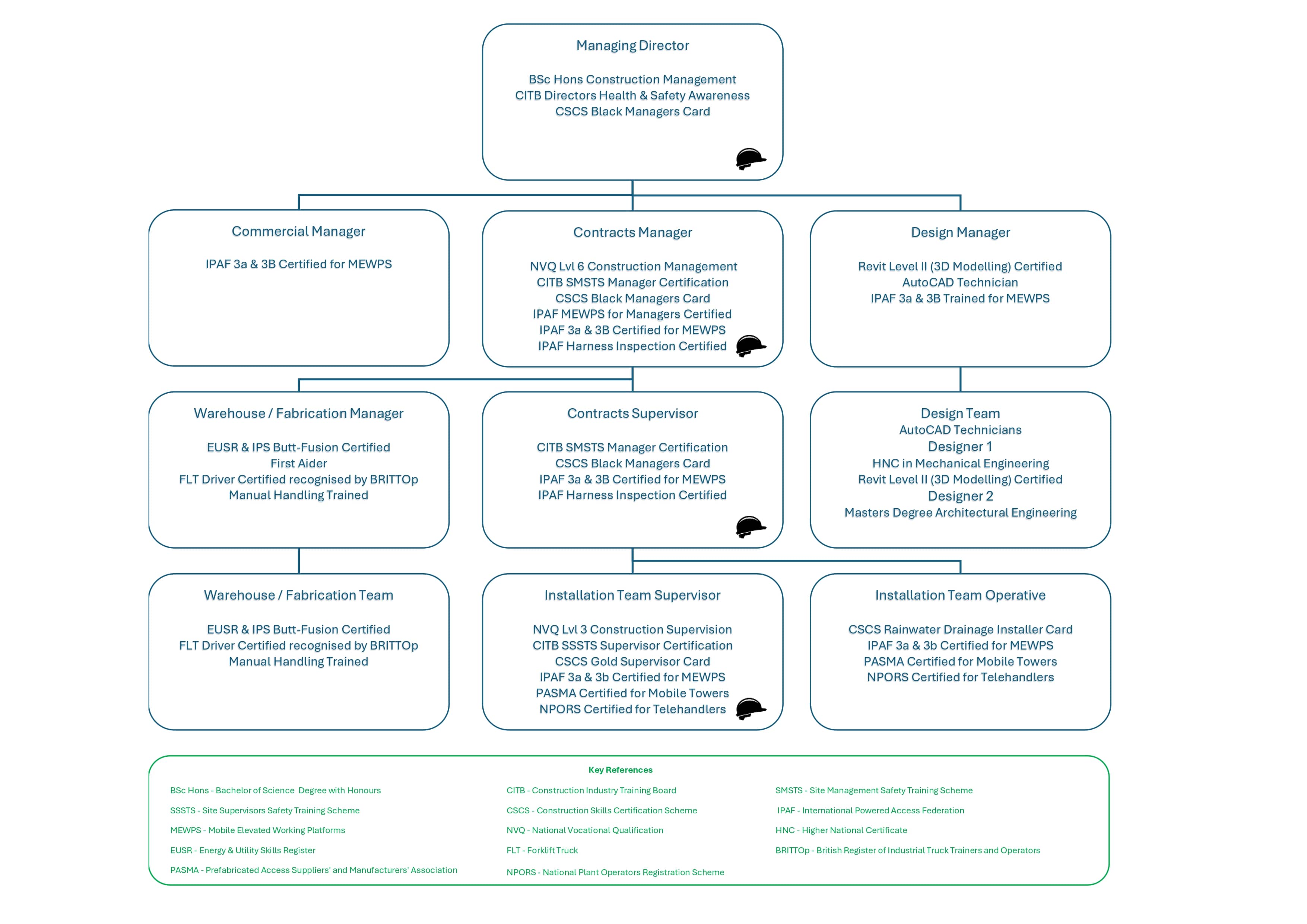
Contact us
Contact the team today to discover how we can help your building improve its drainage efficiency by bringing modern solutions in the form of siphonic drainage.
Featured Project
